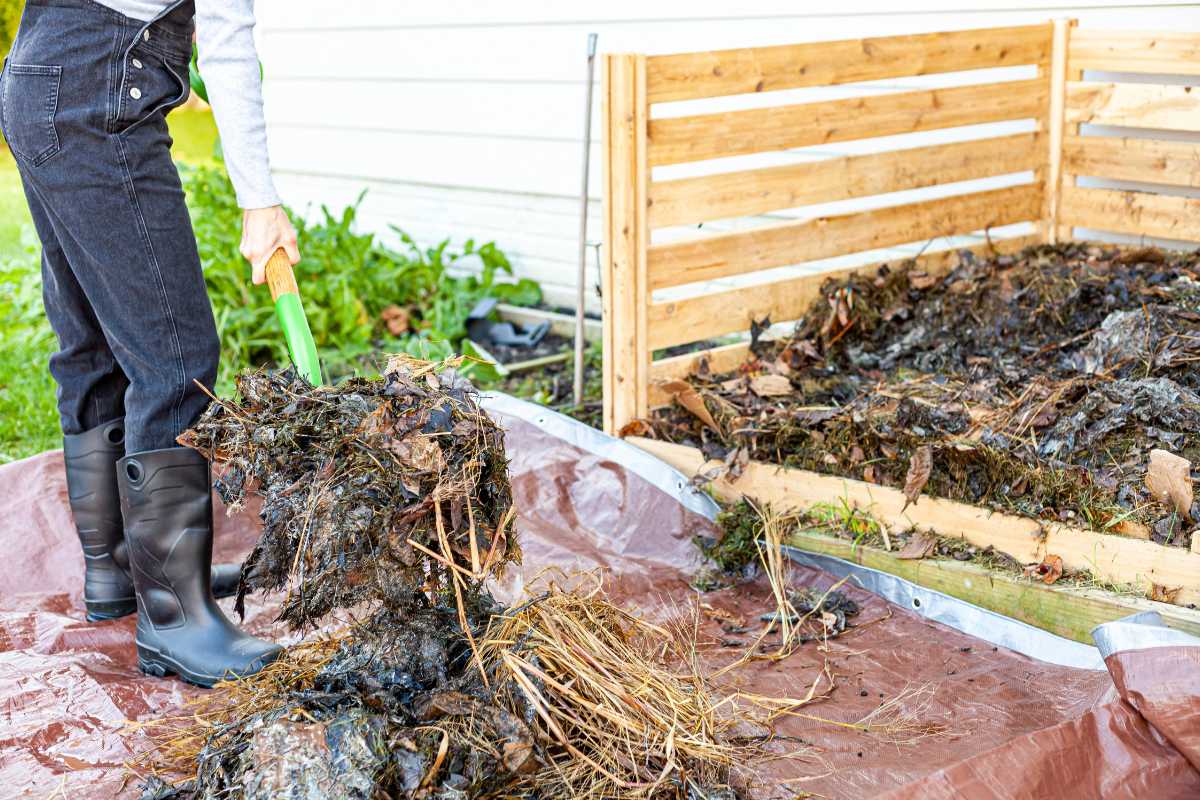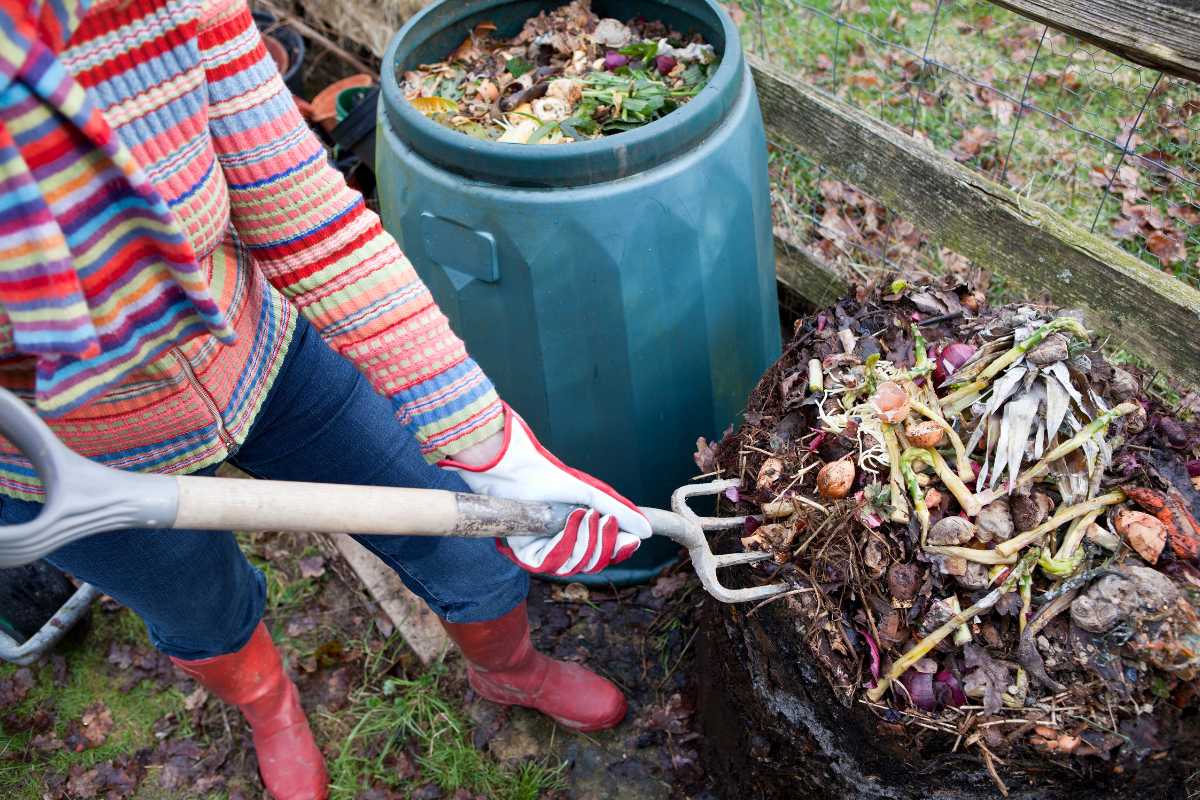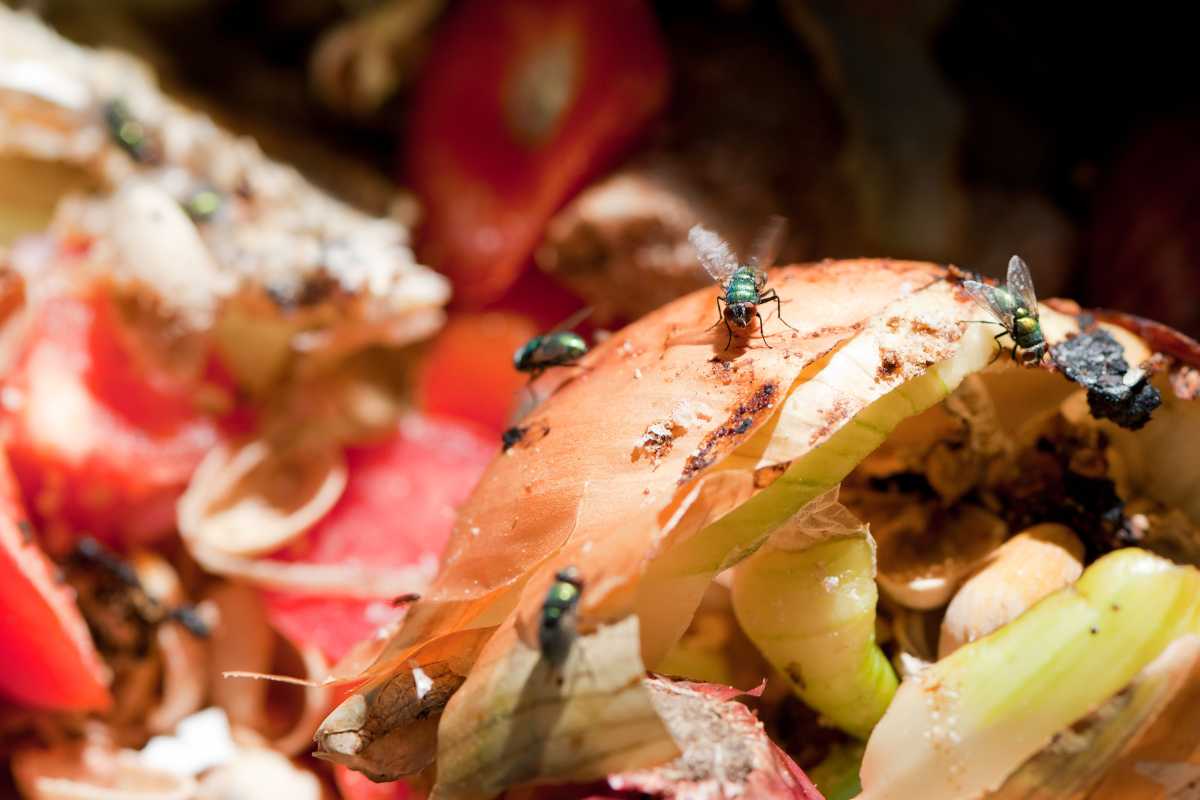Turning compost is one of the many phrases you will encounter when researching composting techniques. If you’re thinking, “turning it into what?”, that’s not exactly the meaning.
Turning your compost means mixing the compost. The reason gardeners say “turning” rather than “mixing” is that the aim is to get the fresh organic matter to the bottom and the decomposed matter to the top.
This article will discuss why gardeners turn their compost heaps, how and when to do it, and what materials are needed.
Why Turn Compost

Turning compost helps to aerate your compost and speeds up the decomposition process. Hot composting requires frequent turns of your compost pile to keep up the aerobic decomposition and encourage the beneficial microbes that heat the compost.
By mixing the compost up, we’re able to distribute the heat evenly throughout the entire heap so that the whole thing stays at an even temperature. The center is the hottest area of a hot compost pile. So spreading the center compost to the outer areas will help spread and keep the biological activity high all around.
Proponents of turning compost say that turning your compost will reduce any smells by breaking down the organic matter quickly. Compost tumblers were explicitly invented to make turning your compost easier.
So what happens if you don’t turn your compost heap? Honestly, not much.
If you have your green material to brown material ratio correct, your materials will still decompose, but it might take more time. However, if your balance is off, problems can occur in your compost.
Insects and other animals might also take a liking to your nice warm pile and set up residence if your compost heap is left unattended for long periods.
How Often to Turn Compost

How often you should turn a compost heap is actually a highly debated topic.
Some say a compost heap should be turned once or twice a week, and others say once every month. Really, it depends on how much time you want to put into composting and how quickly you want results.
However, it is possible you can turn your pile too often, resulting in the composting process not occurring. If you were to turn it daily, you would disturb the compost ecosystem too much, which may prevent the organic material in the pile from decaying.
By turning your pile often, you will quickly achieve usable compost. The less you turn it, the longer the decomposition process will take. If you have a mature compost heap with a good mix of materials, you probably won’t need to turn it as often as if you have a new heap.
If you are unsure how your compost is going, or if you aren’t confident you have your mix right, turning your heap will sort out most issues. Using a compost thermometer will also help with seeing that it’s hot all around the pile.
How to Turn Compost
Faced with a mound of rotting materials, you may be unsure how to approach turning it. A composting tumbler acts as a perfect compost aerator tool as it takes away the worry of incorrectly turning the pile. All you need to do is turn the handle of the drum containing your compost, and it’s done.
Here I’ve listed what you will need to turn your compost if you don’t have a tumbler and the step-by-step process.
Equipment and Materials Needed
You don’t need much – other than strength – to turn a compost pile.
- Garden Fork – This tool is the best for turning your pile, as compost is usually too dense to use a spade or shovel and too heavy for something as lightweight as a pitchfork. You can also fluff up the compost and separate matted materials with a garden fork.
- Heavy-Duty Gloves – Turning compost is a strenuous activity, and you will get blisters on your hands if you turn it without gloves. You may also need to handle materials, like pulling compost material bits off the tines of your fork or moving things in the compost. You probably won’t want to do this barehanded!
- Compost Stirring Tool – This tool is not an essential piece of equipment, but it is good for those who want to aerate compost without turning it too often.
Step-by-Step Guide to Turning Compost
There aren’t many steps to turning your compost, as you will just be mixing it up as best you can.
- Wait at least two weeks after starting your compost pile to turn it. This period will allow decomposition to begin and microbes and fungus to form.
- Use a garden fork to mix in the top layer of your compost pile into your pile. Take care to mix up the middle of your pile, as this will add air, allow for oxygen flow, and stop the middle of the pile from decomposing anaerobically.
Potential Issues Fixed By Turning Compost

Most issues with compost are combatted by turning your compost pile. Below is a list of problems you can fix by giving your compost a good mix-up.
1. Smelly Compost
Bad smells are usually due to an over-abundance of nitrogen-rich materials, and anaerobic bacteria and decomposition. By turning your pile, you will balance out the excess nitrogen (you can add a brown material like cardboard to help). You will also be aerating the compost and oxygenating your heap.
2. Too Many Insects in Your Pile

While insects help break down your organic materials, you may not want too many in your pile. Ants and fruit flies love to set up residence in your compost pile, and regularly turning your heap will help prevent them from setting up a permanent home.
3. Other pests in your heap
Other critters, like mice, may want to set up a cozy home in your compost heap too. By occasionally disturbing the pile, you will deter any animals from getting too comfy.
The only problem you may encounter when turning your pile, is turning it too much. You want to encourage the microorganisms to flourish, and turning it too often will stop this from happening.
If you live in an area with cold months, you should cut down on turning your pile or stop altogether. Turning your compost when the weather is cold may cool it down too much.
By leaving your compost in the winter, you give it a better chance of maintaining its temperature. Learn more in the Composting in the Winter article.
Tips For Turning Compost
I only have one tip for turning compost, but it’s a good one.
When you build your compost heap, split it into two sections. This way, you can turn your compost from one side onto the other. Moving the compost means you can give it a really good mix-up, and you know you have successfully turned the entire heap.
Turning Compost Final Thoughts
Hopefully, you feel a bit more clued-up about what is meant by turning your compost. You will usually find that gardeners are split into two groups – turners, and non-turners.
Personally, I’m on the side of the non-turners. I only turn my compost heap once a year!
I turn one side into the other and then harvest the compost at the bottom, which is possible as I have a mature compost heap teeming with worms, insects, and microbes. I also ensure a good balance of browns and greens to my pile.
If you want to try hot composting or are just starting out, turning your pile can help you achieve great results reasonably quickly.
To learn more about composting, check out these other helpful articles on composting:




